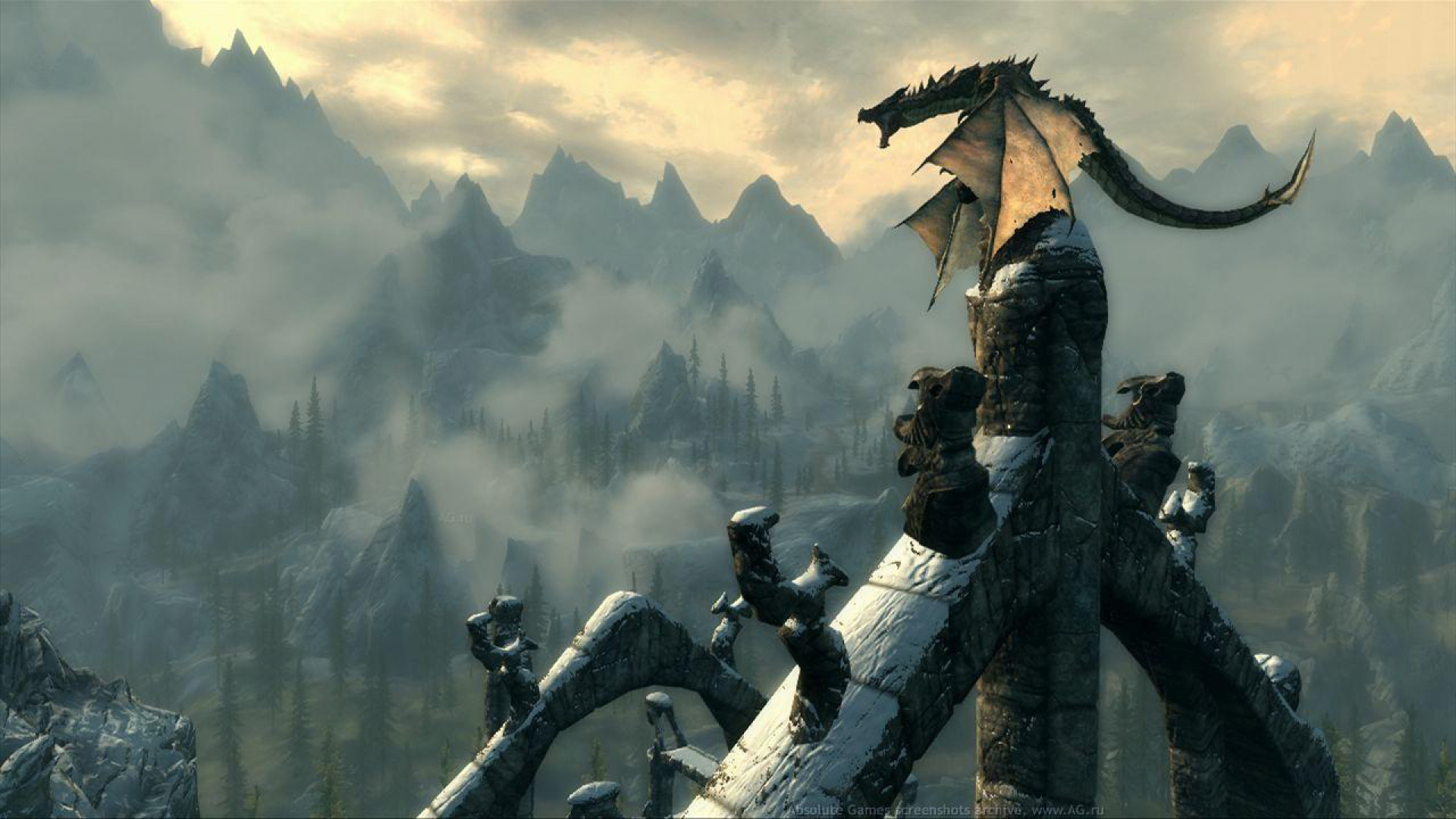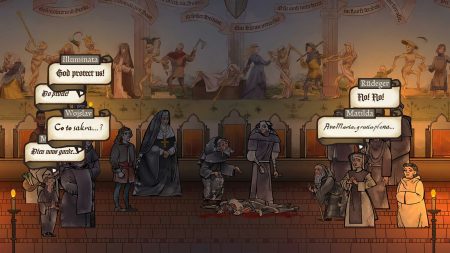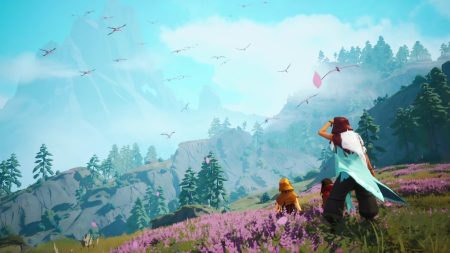The Best and Worst of Xbox Games Studios
Microsoft made waves this past September, announcing it’s acquiring ZeniMax Media and its subsidiary Bethesda Softworks for $7.5 billion. ($7.5 billion!) It’s a megaton announcement (figuratively and literally), and one that should shape the future of games as we know it.
To say Bethesda is an industry giant would be putting it lightly. The publisher is home to a variety of grade-A developers, including Bethesda Game Studios, id Software, and Arkane Studios. Since 1986, the publisher has built up a war chest of notable franchises, including:
- The Elder Scrolls
- The Evil Within
- Dishonored
- Doom
- Fallout
- Prey
- Quake
- Rage
- Wolfenstein
With new IP like Starfield on the horizon, not to mention heavy-hitters like The Elder Scrolls VI, Bethesda is a key player in the coming gen. The acquisition by Microsoft, then, adds a whole new dynamic to the Xbox Series vs. PlayStation 5 discussion.
How Will Bethesda Impact the Xbox Series X | S?
Let’s set some expectations, right off. The ZeniMax acquisition, groundbreaking as it is, won’t clear regulatory review until H2 2021. Even then, Microsoft doesn’t anticipate material changes to its operating income through FY 2022, which ends Sept 30, 2022.
In other words, don’t expect the deal to yield new first-party software for at least a couple years. For reference, Microsoft acquired RPG studios Obsidian and inXile at the tail end of 2018. As of writing, we’ve only seen a teaser for Obsidian’s next game, Avowed. InXile, meanwhile, remains mum on its upcoming AAA projects.
That’s not to say Xbox owners won’t see any immediate impact. Already-announced titles like TES VI and Starfield will now arrive on Game Pass, as will Bethesda’s catalog of existing titles. (Though two exceptions, Deathloop and Ghostwire: Tokyo, remain timed PS5 exclusives.)
Even if it is a long wait for new content, one can’t help but theorize. How does the addition of Bethesda’s studios impact Xbox’s long-term prospects? Which developers will prove the most invaluable?
As things stand, here’s a personal ranking of Xbox’s 23 creative studios, from worst to best:
The Best Xbox Studios, Post-Acquisition
To make things easier to follow, I divvied up Xbox’s games studios into the following quality tiers:
- 23-21: Question marks
- 20-16: Below average
- 15-11: Average
- 10-6: Good
- 5-1: Great
While track record helped inform these rankings, even more important was future outlook. How versatile is the studio? Is it working on new IP? Does it have solid direction and a veteran leadership team? All of these questions played into the following picks.
But, enough chit-chat. Let’s dive in:

Questionable Xbox Studios
23. Xbox Games Studios Publishing
While Xbox considers its publishing arm one of its “studios,” XGS Publishing doesn’t actually develop anything. (Thus, it sits at #23.) Instead, it curates first- and second-party content for the Xbox ecosystem. And, to that effect, it’s done an admirable job.
In addition to the first-party titles you’re familiar with, XGSP is responsible for some stellar games from Xbox’s partner studios. Within the past generation, it produced the following:
- Dead Rising 3 (Capcom)
- Killer Instinct (Double Helix Games, Iron Galaxy)
- Microsoft Flight Simulator (Asobo Studios)
- Ori and the Blind Forest (Moon Studios)
- Ori and the Will of the Wisps (Moon Studios)
- Quantum Break (Remedy Entertainment)
- Sunset Overdrive (Insomniac Games)
- Tell Me Why (Dontnod Entertainment)
Sure, there were duds. Comcept’s ReCore and Crytek’s Ryse: Son of Rome released to middling reviews. Sumo Digital’s Crackdown 3 performed even worse, suffering through extensive development hell. And PlatinumGames’ Scalebound didn’t even see the light of day.
But Xbox Games Studios Publishing continues to be a crucial part of the business. It remains to be seen what partnerships Microsoft has lined up for next gen. (If anything, I’d expect far fewer, given all the recent acquisitions.) Whatever it does bring, however, it’s sure to be worthwhile.
22. Roundhouse Studios
Roundhouse Studios is an interesting addition to Microsoft’s portfolio. Bethesda spun up the team in late 2019, following the closure of developer Human Head Studios. The developer sports talent from games like Prey (2006), Rune, and Square Enix’s The Quiet Man.
Roundhouse certainly has experience, having worked on RPGs, shooters, beat ‘em ups, and more. But the fact remains that Human Head was shuttered, and with good reason. (The reviews for The Quiet Man and Rune II don’t exactly inspire confidence.)
Still, the new studio—and Microsoft’s acquisition—could signal a fresh start. Roundhouse has been working on “unannounced projects” for nearly a year now. Here’s hoping they leave a good lasting impression, this time around.
21. Alpha Dog Games
Another recent Bethesda purchase, Alpha Dog specializes in mobile games. The studio has two titles to its name: RTS MonstroCity: Rampage and action-RPG Wraithborne. Not much else can be said about the studio. Wraithborne released in 2012 to lukewarm reception, and 2017’s MonstroCity didn’t drum up much in the way of excitement, either.
Presumably, Bethesda purchased Alpha Dog as part of a larger push into mobile gaming. It remains to be seen whether Microsoft’s acquisition will impact this strategy. Regardless, the studio’s impact will likely be minute, given Xbox’s focus on console and PC experiences.

Below Average Xbox Studios
20. Compulsion Games
Scarce info has come out of Compulsion Games since Xbox bought it (and others) in 2018. The Montreal-based studio has developed two titles: 2013’s Contrast, and 2018’s We Happy Few. Neither was particularly well-received—a shame, given the impressive art direction on display.
Xbox enthusiasts have likened Compulsion to Irrational Games (Bioshock). Both studios share a love for macabre worlds and unnerving stories. Unfortunately, Compulsion has yet to crack the code on compelling gameplay. Here’s hoping their third time’s the charm.
19. Undead Labs
It’s hard to believe Undead Labs has been around for over a decade. The State of Decay studio debuted the zombie series in 2013, after four years of development. Despite lacking polish and having some nasty bugs, it was a smart take on survival horror. Critics generally agreed.
In 2018, the studio released a sequel, State of Decay 2. Unlike its predecessor, SoD2 did little to break new ground. The visuals received a welcome overhaul, but the bugs and jank persisted. Needless to say, critics weren’t as forgiving this time around.
Fast-forward to 2020. Its sequel might have fizzled, but Undead Labs stuck with it. The studio released a free content update, titled “Juggernaut Edition,” which added a host of new features and improvements. The update didn’t make up for a disappointing release, but it did show Undead Labs’ commitment to doing right by its fans.
Next gen, then, Undead Labs needs to come out swinging. State of Decay 3 looks ambitious, if it’s brief teaser is anything to go by. It’s possible we’re in for a darker, more cinematic story. Add in compelling worldbuilding and tighter mechanics, and Undead Labs could have a real winner.
Whatever direction the studio does take, it needs to be bold. The series may be down for the count, but it’s certainly not out.
18. World's Edge
At X019, Age of Empires creative director Adam Isgreen announced World’s Edge, a new studio dedicated to future series entries. Alongside the reveal, Isgreen and Microsoft debuted new footage of Age of Empires IV.
Since 1997, Age of Empires has enjoyed a long history of successful releases. So it makes sense that Microsoft would provide the extra resources needed to help the franchise grow.
Yet 15 years have passed since Age of Empires III. And, despite numerous expansions in the interim, time hasn’t been kind to the franchise. Microsoft recently remastered AoE I, II, and III, each of which only seems to underscore the lack of forward momentum for the series.
Perhaps Age of Empires IV will be that critical next step. At the end of the day, though, World’s Edge specializes in rather niche, PC-only experiences. The studio certainly has its audience, but it hardly aspires to set the gaming world ablaze.
17. Mojang Studios
When Microsoft acquired Mojang back in late 2014, Minecraft was already a juggernaut. From phones and Fire Sticks to Raspberry Pi, it seemed like every inch of the market had been tapped. Yet, despite a whopping 50 million copies sold, the franchise was only warming up.
As of May 2020, Minecraft had sold 200 million copies. 126 million players were playing on a monthly basis, and one could only imagine the amount grossed through skins, texture packs, and physical merchandise. In hindsight, the $2.5 billion acquisition feels like a bargain.
So, why so far down the list? While Minecraft’s popularity is undeniable, Mojang’s future prospects are less certain. The studio’s first major release in years, Minecraft Dungeons, has already topped the charts. But the game largely failed to appeal to critics and players.
The Minecraft IP will generate revenue for years to come. Of course, that’s a blessing for Microsoft and its shareholders. But for core gamers—and perhaps even some of Mojang’s devs—the lack of creative independence may feel like a curse.
That’s not to say the Minecraft studio can’t surprise or impress. But, given how tethered it is to the land of creepers and pickaxes, Mojang faces an uphill battle for relevance in the next generation.
16. Rare
Of all Microsoft’s studios, none is perhaps more controversial than Rare. The British developer made a name for itself in the early ‘90s, putting out hits like Battletoads and Killer Instinct. But it was Rare’s partnership with Nintendo that cemented the studio’s status as an industry legend.
Rare produced some of gaming’s most iconic franchises during this golden age. From Banjo-Kazooie to Perfect Dark, the only thing that matched the studio’s versatility was its quality. Nintendo even entrusted Rare with the Donkey Kong license, resulting in one of the most beloved platformers of all-time.
Xbox-era Rare, by contrast, hasn’t fared as well. For every promising new IP, like Kameo and Viva Piñata, there’s been a dud, like Kinect Sports or the underwhelming Banjo-Kazooie: Nuts & Bolts. It didn’t help that the studio’s founders left back in 2004, deflating much of its momentum.
Despite the rocky history, there’s reason for optimism. Since abandoning the Kinect to refocus on traditional games, Rare has brought fans Killer Instinct, Rare Replay, and even a new Battletoads. Yet it’s the open-world pirate game, Sea of Thieves, that has impressed the most.
With more than 15 million active players as of July 2020, Sea of Thieves shows that Rare can still enthrall players with creative worlds and mechanics. The upcoming Everwild will likely be a defining moment for the studio. But if Rare can deliver, it may finally usher in a new era.

Average Xbox Studios
15. ZeniMax Online Studios
As its name suggests, ZeniMax Online focuses on online experiences. The studio is most well-known for developing 2014’s Elder Scrolls Online and subsequent expansions. It also worked on 2018’s Fallout 76, albeit in a support role to Bethesda Game Studios.
While ESO received lukewarm reception at launch, it found its groove in later years. ZeniMax released a bevy of content updates, each with new settings, mechanics, and storylines. It helped that the game ditched its monthly subscription in favor of an accessible à la carte model.
Fallout 76, by contrast, was an unmitigated disaster. Despite the poor launch, the game’s made similar strides to ESO, improving over the months to become not just serviceable, but rather good. It’s unclear how big a role ZeniMax Online played in this turnaround, but a win’s a win.
Outside of the upcoming Commander Keen reboot for iOS and Android, ZeniMax Online’s future is hazy. Undoubtedly, it has more multiplayer titles in the works. But without a clear roadmap, it’s hard to imagine ZeniMax doing much to advance Microsoft’s portfolio—at least in the short term.
14. inXile Entertainment
At X018, hot off the heels of its Summer Studio Spending Spree™, Xbox surprised yet again. This time, it had purchased Western RPG makers Obsidian and inXile Entertainment. And while the acquisitions were exciting, they were also somewhat perplexing.
Microsoft has had a long, rocky, public history with Obsidian. Yet the studio possesses immense talent, having produced big hits like Fallout: New Vegas and South Park: The Stick of Truth. So the desire from Xbox’s Phil Spencer to mend that bridge is understandable.
inXile, by contrast, is far more niche. Its biggest claim to fame is the Wasteland series, but the studio has other credits, including The Bard’s Tale and Torment. Yet these past projects always tended to skew toward fans of particular genres—notably isometric RPGs.
Was it overkill for Xbox to buy two RPG studios? On the surface, it looked like it. Obsidian even has its own isometric franchise, Pillars of Eternity, which made the double-dipping even more curious. But, as I’ve highlighted before, there’s far more to the purchase than meets the eye.
Have we seen the results of the acquisition just yet? Not really. Wasteland 3 launched this year to strong reviews, but the game was in the works long before Microsoft stepped in. It also came to PlayStation 4, though Xbox fans had the added benefit of playing “for free” via Game Pass.
For next-gen, inXile has two upcoming projects. Unsurprisingly, both are RPGs, but what may surprise many is the scale of these games. Studio founder Brian Fargo hinted that Microsoft’s backing will help the team “step it up.” He also confirmed the first of these projects will run on Unreal Engine 5.
Will we see inXile leave the realm of isometric games in favor of something larger and more ambitious? Time (and gameplay) will tell, but there’s reason to be excited.
13. Turn 10 Studios
Turn 10 Studios is like the San Antonio Spurs: not the glossiest team, but always competitive. Microsoft established Turn 10 in 2001 to head the Forza Motorsport series and give Sony’s Gran Turismo a run for its money. And, for nearly twenty years, the studio has done exactly that.
Starting with 2005's Forza Motorsport for the original Xbox, Turn 10 has churned out new entries in the series like clockwork. Together with Playground Games’ Forza Horizon spin-off franchise, Forza has grossed more than $1 billion in lifetime sales, with little signs of stopping.
In addition to vying for the sim racer crown, the Forza games double as powerful tech showcases for the Xbox consoles. Most notably, Forza Motorsport 5 was a launch title for the Xbox One. And with a new Forza on the horizon for the Xbox Series, Microsoft has yet another “wow factor” in its back pocket.
But Turn 10’s games are for a specific crowd. So while they may satiate car lovers and tech geeks, those who aren’t already on board with Forza won’t find much reason to get excited about what’s in store.
12. 343 Industries
343 Industries’ stature as Xbox’s flagship studio has wavered in recent years. It’s easy to point to a few low-hanging fruit as causes, like The Master Chief Collection’s buggy launch or Halo 5’s underwhelming campaign. But the smoking gun for 343 has to be the troubling development of Halo Infinite.
Here’s a brief timeline of Halo Infinite’s development:
- June 2018: Infinite is announced at E3 2018 with a cryptic teaser trailer.
- June 2019: 343 shows off an in-engine cutscene at E3 2019 (no gameplay).
- August 2019: Halo Infinite creative director Tim Longo leaves Microsoft (via Kotaku).
- July 2020: 343 debuts Infinite’s campaign to intense fan backlash.
- August 2020: The studio announces it has delayed Halo Infinite to 2021.
- October 2020: 343 studio director Chris Lee steps down from the project (via Bloomberg).
Of course, one could argue Infinite’s delay and subsequent leadership change was a reactionary decision (and not an indictment on the game’s quality). But longtime games reporter Jason Schreier suggests this is just the latest in a long string of development woes for 343.
343 had a lot to prove when it took over for Bungie following 2010’s Halo: Reach. Fast-forward to 2020, and the results are admittedly mixed. Add in 343’s recent struggles to get Halo Infinite into top shape, and the studio is in a precarious position heading into next gen.
11. The Coalition
The Coalition rounds out the “core trio” of Xbox studios. For some, the combination of Forza, Halo, and Gears has been enough to buoy Microsoft’s otherwise lackluster first-party efforts in recent years. But far more have used this as proof Xbox needs to reinvent itself next gen.
While there’s plenty of truth here, that shouldn’t detract from what The Coalition’s accomplished this gen. Yes, Gears has been around since 2006, and it’s long past its prime. But it also remains a solid franchise with few rivals.
Gears of War 4 was The Coalition’s first stab at the franchise divorced from Epic Games, and it proved relatively successful. But Gears 5 is where the new vision for the franchise has started to take shape—and that vision looks promising.
Unlike 343 and Halo, The Coalition has been able to take more risks over the years with the Gears formula. The studio has shifted its focus to a younger cast of characters, and even introduced a semi-open world. Perhaps most importantly, it’s put a female, PoC protagonist in the driver’s seat.
As a single IP studio (at least for now), The Coalition will never be quite as exciting as some of Xbox’s newer additions. But the team is proving it still has tricks up its sleeve—and that’s reason enough to be optimistic.

Good Xbox Studios
10. Tango Gameworks
Tango Gameworks is a Tokyo-based developer founded by Shinji Mikami (Resident Evil, Dino Crisis). The studio started off in March 2010 as an independent company, but was acquired by ZeniMax in October 2010 following financial troubles.
Under the Bethesda label, Tango created the survival horror series The Evil Within—a clear nod to Mikami’s Resident Evil roots. Following 2017’s The Evil Within 2, the studio began work on its newest IP, Ghostwire: Tokyo.
Initially, Ghostwire was under the creative direction of Ikumi Nakamura, who became an internet sensation after unveiling the game at E3 2019. While Nakamura would end up leaving the studio for another “project,” the title seems to be in capable hands, judging by recent gameplay.
Ghostwire: Tokyo is slated to release in 2021 as a timed PS5 exclusive, but will undoubtedly make its way to Xbox consoles sometime thereafter. It’s unclear what’s next for the studio, but given Phil Spencer’s enthusiasm for Japanese games, Tango serves to fill a crucial gap in Xbox’s portfolio moving forward.
9. MachineGames
MachineGames has accomplished a lot for such a recent studio. The developer was founded in 2009 by former talent from another Swedish team, Starbreeze Studios. A year later, ZeniMax purchased MachineGames to revitalize its Wolfenstein franchise.
And what a revival it’s been. Since 2014, MachineGames has put out five new Wolfenstein titles. While entries like The New Order and The Old Blood received their share of praise, the clear standout was 2017’s The New Colossus. The game expertly melded shooting and story, underlining America's disturbing history of racism.
Granted, not all of the studio’s momentum has been positive. In 2019, it released Wolfenstein: Youngblood and the VR-only Wolfenstein: Cyberpilot. Neither game landed well with players, which begs the question: Will Wolfenstein still have legs in the next gen?
That answer’s up to Bethesda, MachineGames... and now Microsoft. Even if the Wolfenstein series has run its course, the talent of this studio is undeniable. Add in Microsoft’s backing, and MachineGames has the runway to develop meaningful projects for the foreseeable future.
8. Double Fine
With its purchase of Double Fine in 2019, Microsoft sent two clear signals to fans. First, that Xbox’s spending spree was far from over (see: ZeniMax). And second, that the company values quirky smaller-scale titles, even if they’re not necessarily megahits.
The latter point is especially important. Up until then, Xbox’s first-party slate consisted mainly of shooters, racers, and RPGs. Games like Gears 5 and Wasteland 3 focused on gritty stories and desolate landscapes. Compared to Sony and Nintendo’s colorful worlds, Xbox left something to be desired.
Double Fine fits that need like a glove. The San Francisco studio, led by legendary designer Tim Schafer, is no stranger to zany projects and creative worlds. In fact, Double Fine has done a bit of everything over the years, genre-wise:
- Broken Age (adventure)
- Brütal Legend (action-adventure)
- Costume Quest (role-playing game)
- Iron Brigade (shooter, tower defense)
- Massive Chalice (turn-based strategy)
- Psychonauts (platformer)
- Stacking (puzzler)
With such a diverse track record, Double Fine brings an important X factor to Team Xbox. Not only will the acquisition inject some creativity into the Xbox portfolio; it’ll give Double Fine the financial means to take on even bolder projects moving forward.
7. Ninja Theory
Ninja Theory is known for stellar action games. From Heavenly Sword to DmC: Devil May Cry, the British studio’s combat systems rival the best in the genre. But Ninja Theory deserves equal credit for its engaging stories and captivating characters.
2010’s Enslaved: Odyssey to the West featured the charismatic duo Monkey and Trip, providing a narrative that has since become a cult-favorite. Ninja Theory further developed its storytelling chops with 2017’s Hellblade: Senua’s Sacrifice, which explored the warrior Senua’s struggle with mental health.
As studios like Naughty Dog and Santa Monica Studio push the boundaries of storytelling in games, Ninja Theory isn’t far behind. The studio continues to hone the art of melding gameplay and narrative, and the upcoming Senua’s Saga: Hellblade II looks to be its most ambitious effort to date.
Could Hellblade II or the mysterious Project Mara be Microsoft’s answer to The Last of Us Part II and 2018’s God of War? Ninja Theory would have its work cut out, but it’s certainly not out of the question, given the talent there.
6. id Software
Microsoft and id Software go together like two space marines in a cryo chamber. The former is responsible for some of the most iconic shooters in gaming history. And the latter... Well, the same applies, arguably even more.
In many ways, Bungie took inspiration from id’s Doom when developing its Marathon trilogy. The lessons learned there would carry over to future projects—notably, Halo: Combat Evolved. From its space theme and macho protagonist, to its health kits and visceral firefights, Halo brought the Doom formula into the 21st century while charting its own path. (Recharging shields for the win.)
With id Software joining the Microsoft family, the two shooter giants will finally join forces. It remains to be seen what’s next for id at Xbox (not to be confused with ID@Xbox). But the possibilities really are endless.
Will Master Chief and Doomguy pair up in the next Doom? Could id Software develop a Halo game? Likewise, would Microsoft ever consider letting other studios take a stab at IP like Quake and Rage? Who’s to say, but the prospect alone is enough to catapult id Software to #6.

Great Xbox Studios
???
Stay tuned, as we reveal our #5-1 rankings in the days to come!
David is the founder of The Punished Backlog. He has a problem finishing games he starts.
Just beat: Donkey Kong Bananza.
Working on: Hollow Knight: Silksong.
Can't wait for: Metroid Prime 4: Beyond.
Follow David on Twitter at @David_Silbert to keep up to date with all things The Punished Backlog.










